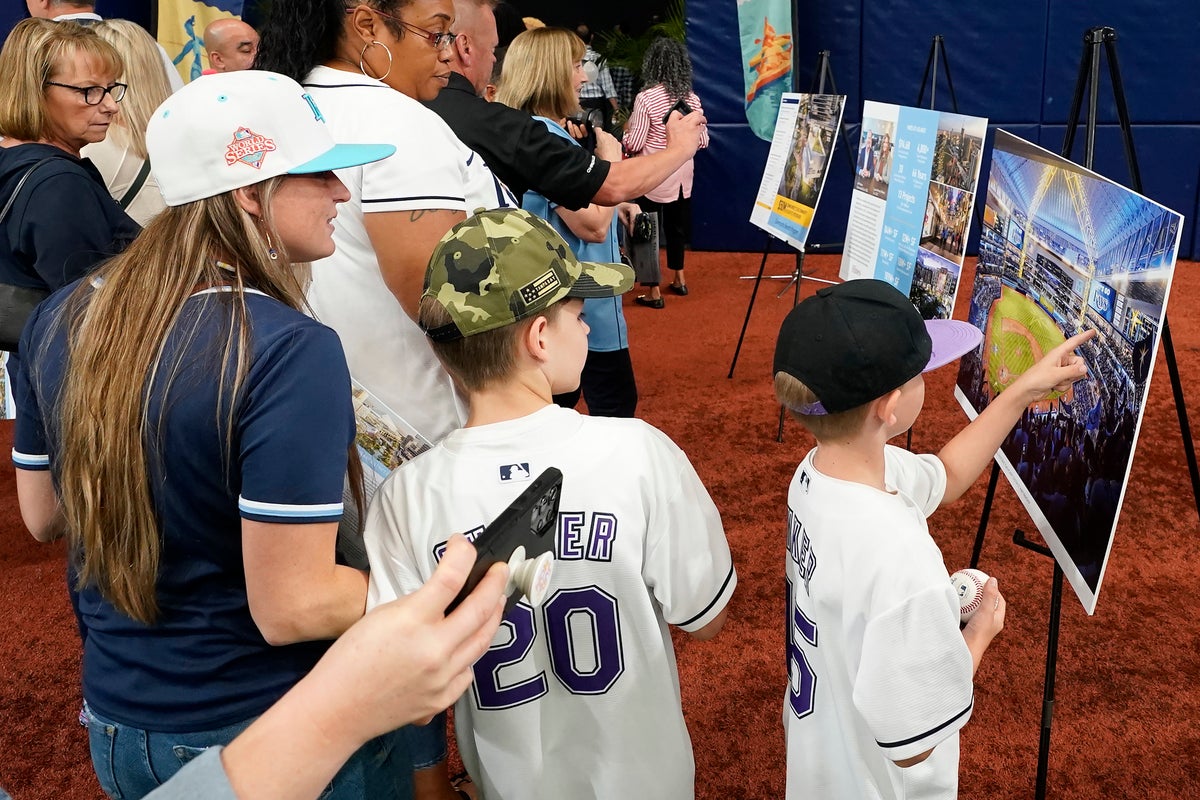
The playoff-bound Tampa Bay Rays put the finishing touches Tuesday on plans for a new 30,000-seat ballpark in St. Petersburg as part of a huge $6.5 billion development project that includes affordable housing, retail, bars and restaurants and a Black history museum.
The site is on the same 86-acre (34-hectare) tract of downtown land where Tropicana Field now sits. That domed, oddly-tilted ballpark will be demolished once the new one is built, in time for Opening Day 2028, said Brian Auld, co-president of the Rays, in an interview Monday.
The plan, which still has some political hurdles on funding and approvals to clear, would keep the Rays in St. Petersburg for the foreseeable future despite constant talk of the team moving across the bay to Tampa, possibly to Nashville, Tennessee, and even a plan to split home games with Montreal that was shot down by Major League Baseball.
“We're going to be here for a very long time,” Auld said. “We're all really thrilled that for the first time since we started this we have a clear path to make sure the Rays stay in Tampa Bay for generations to come.”
The announcement for the new ballpark and surrounding project came Tuesday at an event on the field at Tropicana Field.
“I am so excited that the Rays are here to stay. Finally!” said Janet Long, chair of the Pinellas County Commission, who noted this will be the largest economic development project in county history. “This project is a home run and means so much more to us than sports.”
The Rays have played in St. Petersburg since their inaugural 1998 season. The Trop, as the Rays current home is called, is criticized for being dank, outdated and having roof support beams that are sometimes hit by fly balls. It cost $138 million when it was built in 1990 to draw a major league team to the region.
The new ballpark will cost about $1.3 billion, officials said, with roughly half of that coming from the Rays and half from city and county governments, co-president Matt Silverman said. The structure will have a fixed roof in rainy and hot Florida but it will be low-profile, with doors and windows on the sides that can open to the fresh air during cooler months.
“It will have the smallest capacity in Major League Baseball. Having that roof is necessary, but you want to create intimacy,” Silverman said.
Pinellas County officials say their share of the money will come from a bed tax largely funded by visitors that can only be spent on tourist-related expenses.
The Rays (92-59, second in the American League East) on Sunday qualified for the playoffs for the fifth straight year but have among the lowest attendance figures in baseball, with an average of about 17,778 fans per home game, according to MLB.
The overall project goes beyond baseball. It has been pushed by Ken Welch, St. Petersburg’s first Black mayor, as a way to make amends for the destruction of the Historic Gas Plant neighborhood whose mostly Black residents were forced to move in part because of the Rays’ ballpark.
“I saw a need to build a better path forward by prioritizing the community’s need for affordable and workforce housing – both onsite and offsite,” Welch said in a speech earlier this year.
Hines global development company, which is managing the project, says it will include more than 6,000 new apartments and condominiums, office space, retail space, a hotel, Black history museum, and more. The goal is to break ground in the second half of 2024.
“It's more than just a baseball team that calls it home,” Silverman said. “The stadium question has hung over this franchise for decades. We're creating a new neighborhood.”



!["[T]he First and Fifth Amendments Require ICE to Provide Information About the Whereabouts of a Detained Person"](https://images.inkl.com/s3/publisher/cover/212/reason-cover.png?w=600)



